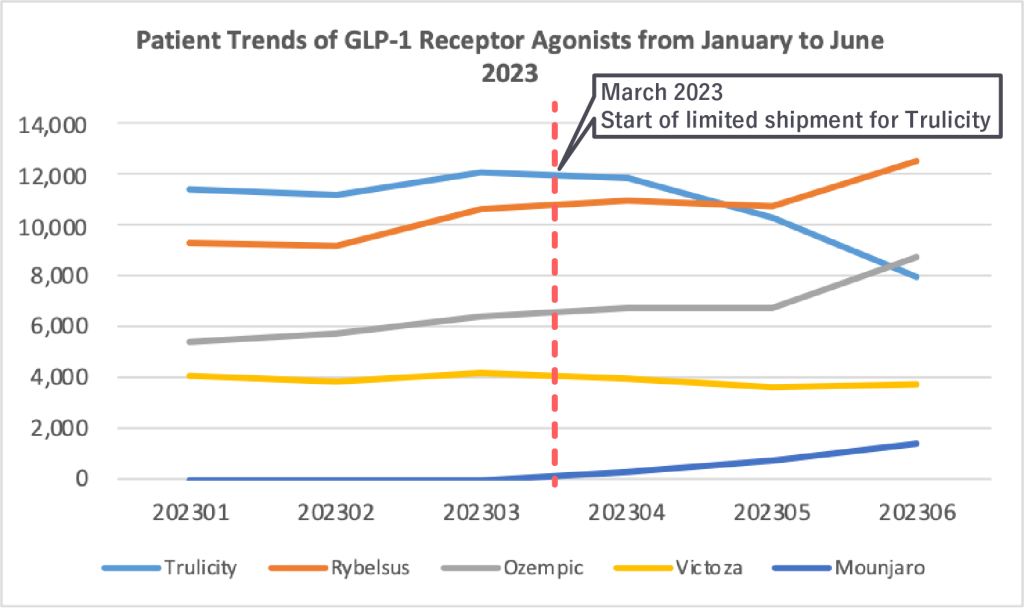
Monthly Patient Trends and Age Distribution of GLP-1 Receptor Agonists in the Latest Period (January to June 2023)
Due to the commercial success and social attention in the media putting pressure on demand, GLP-1 receptor agonists, which are prescribed for the treatment of type 2 diabetes and certain cases of obesity, have met a tough supply situation with restricted distribution. Eli Lilly Japan K.K.’s has been implementing limited shipments since March of this year for Trulicity® Subcutaneous Injection 0.75mg Ateos. Shipments for some other formulations are also announced in public communication.
Furthermore, the Ministry of Health, Labour and Welfare (MHLW) has issued administrative notifications to relevant parties regarding this matter.
Reference:
- Apology and request regarding supply of Trulicity® Subcutaneous Injection 0.75mg Ateos by Eli Lilly Japan K.K.
- Notice from Novo Nordisk Pharma Ltd.: Supply of Ozempic® Subcutaneous Injection 2mg (Limited Shipment)
- Notice regarding the supply of Mounjaro® Subcutaneous Injection Ateos by Eli Lilly Japan K.K./Takeda Pharmaceutical Company Limited
- Request for cooperation due to stock shortage of GLP-1 receptor antagonists by the Ministry of Health, Labour, and Welfare, Policy Planning Division for Pharmaceutical Industry Promotion and Medical Information Management
In light of the above, we decided to take a look at the monthly patient usage trends for the major products (Rybelsus, Trulicity, Ozempic, Victoza, and Mounjaro) from January 2023 to June 2023 using MDV data.

Trulicity showed a decreasing trend in line with the limited shipment information implemented in March.
Additionally, for reference, the average age and median age of patients using the above major drugs were calculated.

January 2023 to June 2023
Only hospitals with complete data for the specified year and month
Number of facilities meeting the basic criteria: 423 facilities
Number of patients meeting the basic criteria: 66,666 people
Mounjaro not only binds to the GLP-1 receptor but also to the GIP receptor, resulting in a synergistic effect. This can lead to greater improvements in blood sugar control and weight loss compared to single-agent treatment with GLP-1 receptor agonists. However, there is a tendency for a higher incidence of gastrointestinal adverse events, and as a result, it is administered cautiously to elderly individuals, including those at risk of frailty.
Note: This article was published on November 1, 2023.
Data survey and analysis tailored to your specific requests
Databases, data analysis requests, and more.
© Medical Data Vision Co., Ltd. All Rights Reserved.





